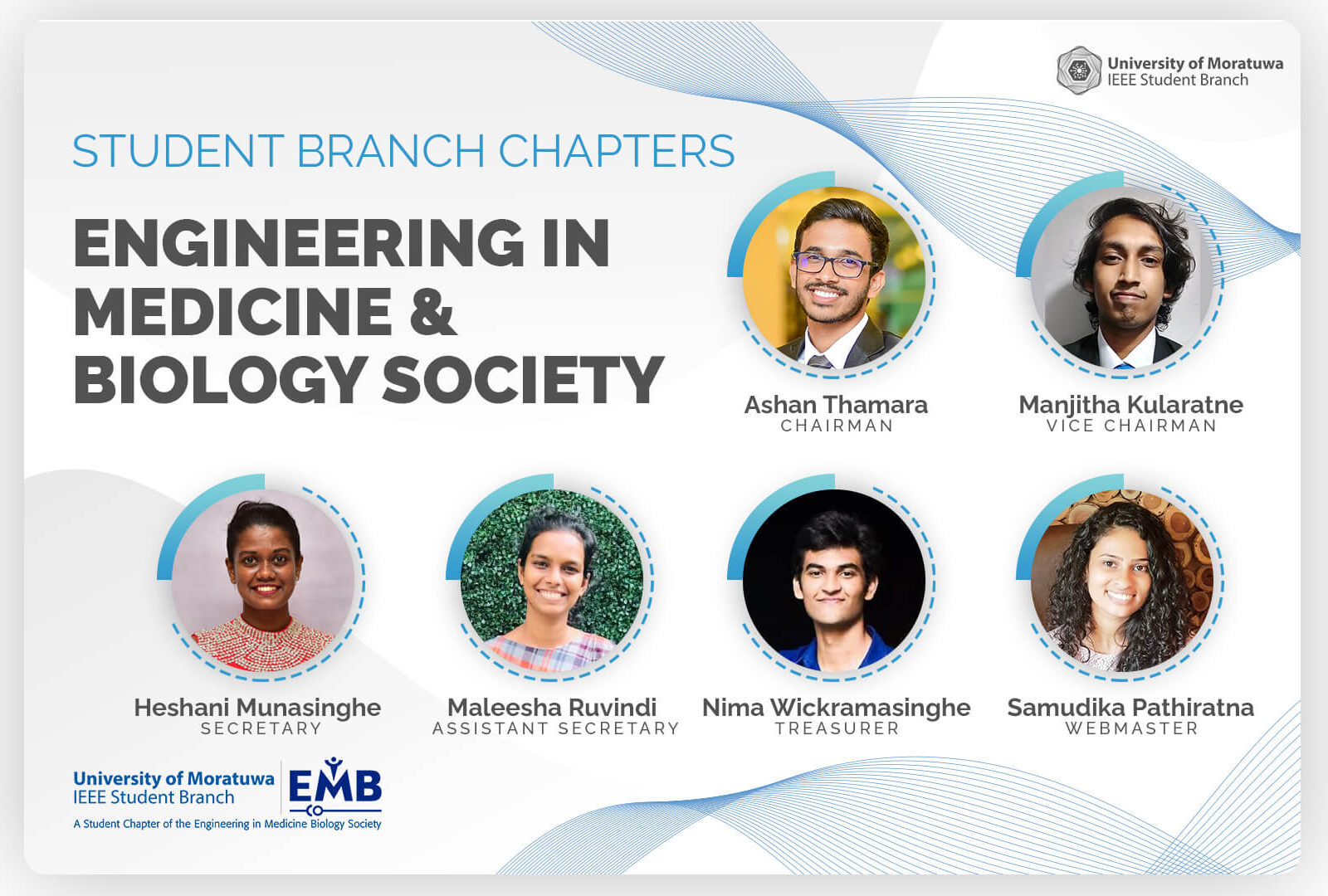
ABOUT THE IEEE EMBS OF UNIVERSITY OF MORATUWA
IEEE Engineering in Medicine and Biology Students Branch Chapter in University of Moratuwa was established with aim of developing the undergraduate involvement in Biomedical Engineering.
The field of Biomedical Engineering is one of the most recent Engineering disciplines in the Sri Lankan context. Biomedical Engineering has it’s connection with a multitude of Engineering disciplines including Chemical Engineering, Mechanical Engineering, Computer Engineering, Electrical Engineering, Materials Engineering and Electronic Engineering.
ABOUT THE IEEE ENGINEERING IN MEDICINE AND BIOLOGY SOCIETY
IEEE Engineering in Medicine and Biology Society (EMBS) is the world’s largest international society of biomedical engineers. The organization’s 12,000 members reside in some 97 countries around the world. EMBS provides its members with access to the people, practices, information, ideas and opinions that are shaping one of the fastest growing fields in science.
Our members design the electrical circuits that make a pacemaker run, create the software that reads an MRI, and help develop the wireless technologies that allow patients and doctors to communicate over long distances. They’re interested in bioinformatics, biotechnology, clinical engineering, information technology, instrumentation and measurement, micro and nanotechnology, radiology, and robots. They are researchers and educators, technicians and clinicians—biomedical engineers are the link between science and life science, creating innovations in healthcare technology for the benefit of all humanity.
ABOUT BIO MEDICAL ENGINEERING
As their title suggests, biomedical engineers work at the intersection of engineering, the life sciences and healthcare. These engineers take principles from applied science (including mechanical, electrical, chemical and computer engineering) and physical sciences (including physics, chemistry and mathematics) and apply them to biology and medicine. Although the human body is a more complex system than even the most sophisticated machine, many of the same concepts that go into building and programming a machine can be applied to biological structures and diagnostic and therapeutic tools.
The goal is to better understand, replace or fix a target system to ultimately improve the quality of healthcare.
Biomedical engineering is the fastest-growing career and this trend is expected to continue over the next decade. To learn more about the career of biomedical engineering, check out our student site.